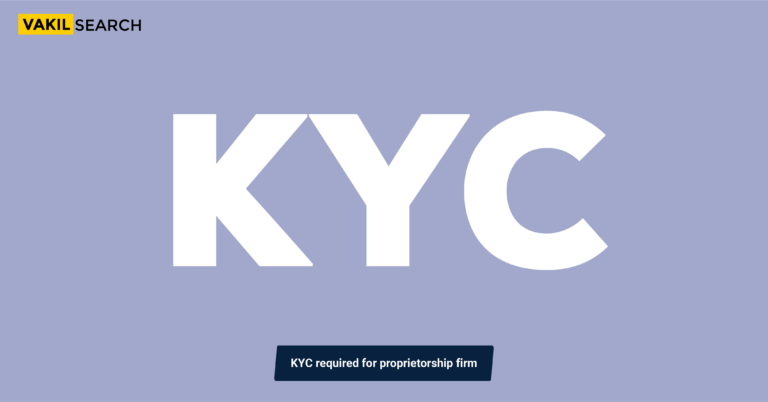A sole proprietorship business runs on the principle ‘All is he and he is all in all’. But what do you do when you need to transfer the ownership of such a business? Let’s find out.
A sole proprietorship or single entrepreneurship venture is one of the simplest types of businesses to establish in India. However, transfer of Sole Proprietorship ownership of such a business to another person necessitates careful measures and various transactions. In this article, we will delve into them for a deeper understanding.
A sole trading concern or sole proprietorship is any business controlled and owned by a single person. A sole entrepreneur who runs the show makes all purchases, executes the sales on his own, and manages all accounts. He is solely entitled to all profits and liable for all losses in business. He is both the founder and controller of the business.
Transfer of Ownership: Sole Proprietorship
Setting up and managing a sole proprietor’s business is extremely easy. No legal formalities are required to start a sole trading concern. Moreover, unlike a company, there’s no legal distinction between a sole proprietorship and its owner. To transfer ownership of such a business, one should transfer all the relevant assets.
Sale of assets
The sole proprietor owns the business assets the same way he owns his personal assets. Some business assets may be utilized for dual purposes, that is, for both commercial and personal use. When the owner decides to sell his company, he must list the assets he wants to sell to the new owner. The rest of the business assets can be retained for personal use.
Changing of Business Name
As a sole proprietor, he can conduct business under his own name or register another ‘doing business as a name with the state government. Suppose the new owner wishes to continue doing business under the same DBA. In that case, the sole proprietor must fill out a change of ownership form, if one is available. This requirement is not mandatory in all states. Some states even demand a public announcement of the change in a well-known newspaper. Suppose the new owner doesn’t want to continue the business under the same name. In that case, the sole proprietor has to file a DBA cancellation form.
Pending Contracts
If the sole proprietor has an ongoing contract, the new owner should take over and honor it. It is preferable to assign the new owner’s contractual responsibility legally. This event facilitates the seamless transfer of the business. Do remember that If any pending contract has any clause preventing the transfer, the consent of that particular customer is required for the transfer/sale of the business.
Goodwill
Goodwill is difficult to price and even harder to transfer. Suppose a proprietor wants to sell his goodwill as a part of a business sale. In that case, he must consult with a business attorney from Vakilsearch to determine a reasonable price for the goodwill. When goodwill is transferred or sold, it is taxed as a capital gain rather than business income.
How Can I Structure a Sale or Transfer?
Structuring a sale or transfer requires careful consideration and a well-drafted sale agreement, ideally reviewed by an attorney. This written agreement serves as the primary safeguard against misunderstandings regarding what is included in the business sale. For instance, if your name is integral to the business identity, it’s crucial to specify whether the sale mandates a name change. Unless your name holds a unique branding advantage for the new owner and you agree to its continuation, a well-defined agreement ensures clarity and avoids potential disputes in the future. Consulting with legal professionals during this process provides the necessary expertise to navigate complexities and establish a solid foundation for a smooth sale or transfer of your business.
What to Do About Cancelling or Changing a DBA?
If you’ve operated your sole proprietorship under a ‘Doing Business As’ (DBA) name and need to cancel or change it, start by contacting the state office where you registered the name. Most states mandate registration for a business name other than your personal name. If you don’t want the new owner to use the DBA name, request and file a cancellation form. Alternatively, if you agree to let the new owner continue using the name, inquire about a change of ownership form.
It’s important to note that not all states permit a new owner to assume an existing DBA. Some states may also require a public announcement of the change, typically in an approved newspaper. Even if not obligatory, a public announcement is good business practice and may offer added protection against potential liabilities arising from the new owner’s legal issues.
Closing the Sale and Notifying the Interested Parties
Once the sole proprietor finalizes the sale, an agreement should be made. The agreement should include all the sale information as well as the actual terms of the transaction. It should also contain payment terms and conditions made by the sole proprietor regarding the business transfer.
When the sale is completed, both parties must sign it. After closing the transaction, notify all vendors, suppliers, contractors, and other businesses and creditors of the transfer and ensure no new debts are owed to the new owner on the date of sale.
Before the sale, a letter must be written to all insurance companies that cover the business. Customers should also be notified. The situation becomes rather difficult when a specific customer is involved in the sale. A letter should also be sent to those customers introducing the new owner, with a statement by the previous owner that he is no longer liable for any further dealings.
Settling of Accounts
Transferring a sole proprietorship usually involves several transactions. When computing tax the taxation department treats each asset transaction as a distinct sale, resulting in varying tax rates for different assets. Each sale may result in a profit or loss depending on the tax brackets. In addition, all taxes and accounts must be settled before the property is transferred to the new owner.
The Bottom Line
To summarise, the above processes must be followed when transferring sole proprietorship ownership to another person. If you’d like to know more or need professional help on startup registrations or compliance, get in touch with the experts at Vakilsearch immediately!
FAQs
Can sole proprietorship can be transferred to another person?
Yes, a sole proprietorship can be transferred to another person. However, the process may vary depending on the jurisdiction and specific business circumstances. It often involves legal documentation, such as a sale agreement, and may require approval from relevant authorities.
How do I change my sole proprietorship?
Changing a sole proprietorship involves legal and administrative steps. Notify the appropriate government agencies, update business licenses and permits, and inform clients and vendors. If transferring ownership, consult legal professionals, draft a sale agreement, and ensure compliance with local regulations.
Can I transfer ownership of my business?
Yes, ownership of a business can be transferred through a structured process. Draft a sale agreement detailing the terms, conditions, and assets involved. Seek legal guidance to navigate complexities and ensure compliance. Depending on the business structure, approvals from relevant authorities may be necessary.
Is it easy to transfer ownership in a sole proprietorship?
Transferring ownership in a sole proprietorship may have fewer formalities than other business structures. However, it still requires legal documentation, including a sale agreement. While the process can be straightforward, seeking professional advice ensures a smooth transition and compliance with legal requirements, making the transfer relatively easier.
Read more:











